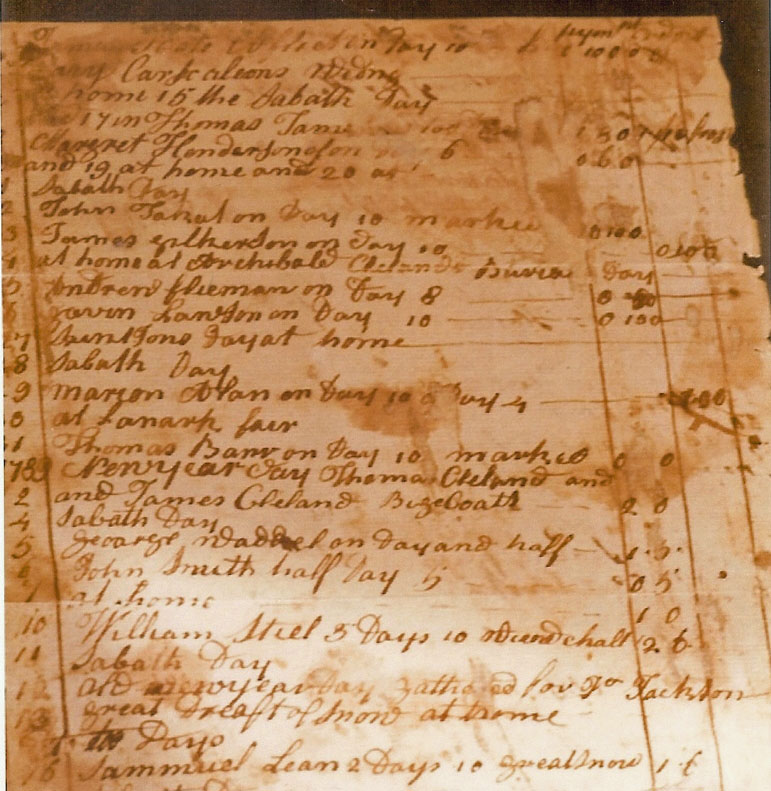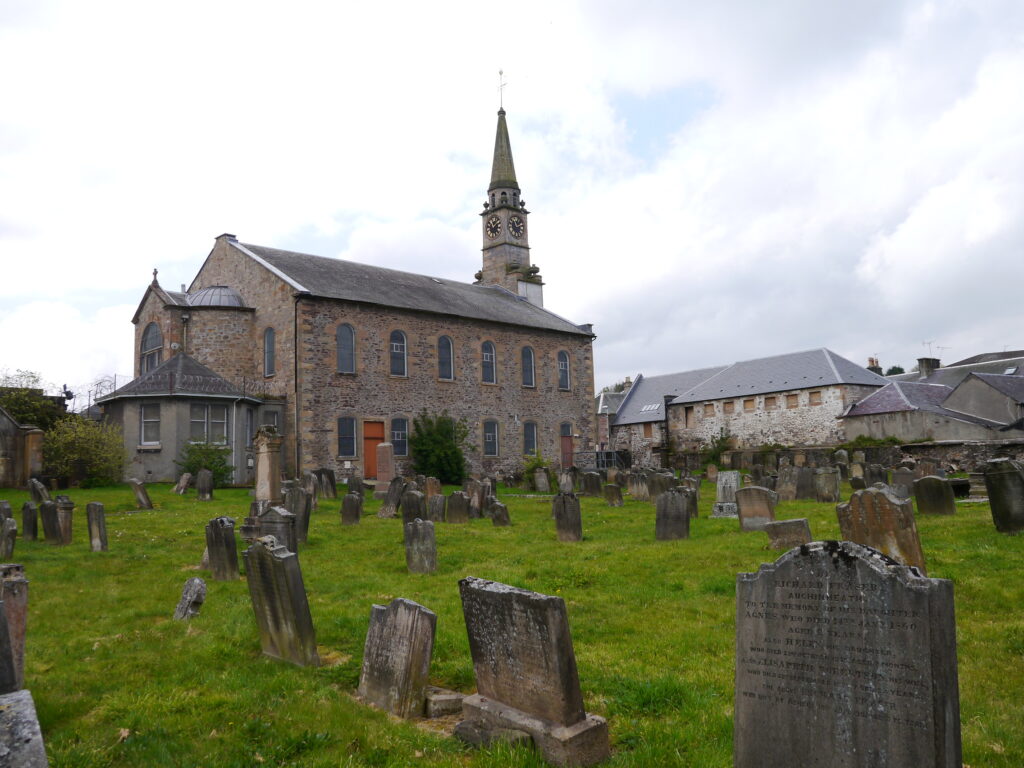In the spring of 1830, eight months after my future great-grandfather James Hamilton was born, the Hamilton family set sail from Scotland for New York and a new life in Upper Canada. James’ parents, Robert Hamilton and Elizabeth Stobo, must have realized there were few opportunities for their children in southwest Scotland and decided to make the move.
Robert Hamilton, born in Lesmahagow, Lanarkshire, in 1789, was a weaver. He married Elizabeth Stobo at Stonehouse parish church, Lanarkshire, in 1816. She had been baptized in 1790, in nearby Avondale parish, “lawful daughter to Robt. in Braehead.”
The couple’s four eldest children, Elizabeth, Janet, Agnes and Robert, were born in Lesmahagow between 1817 and 1824. But times were increasingly difficult for the cottage weaving industry and, around 1820, Robert moved to Glasgow for a factory job. The two youngest children, Margaret and James, were born in the city. The Hamiltons had decided before they left Scotland that they would go to Scarborough Township (now part of the vast city of Toronto, Ontario.) Several members of Elizabeth’s family had already settled there and were doing well in the timber business. The Hamiltons stayed with the Stobo family until they rented land of their own, a farm on Concession III, Lot 25.
Two of Robert’s sisters, Agnes Hamilton, wife of Robert Rae, and Janet Hamilton, wife of John Martin, also immigrated to Scarborough later with their families. His older sister, Margaret, stayed in Scotland with their father because she was not well. “Let me know particularly how sister Margaret is and if you think there is any prospect of her getting better,” Robert wrote his father on May 27, 1830 in his first letter home since arriving in Scarborough.

Although he continued as a weaver, Robert also had learn to farm. He told his father that in the first days after they arrived, they were busy planting potatoes. They also expected to grow Indian corn and get a cow or two. Most of Scarborough’s Scottish settlers took to farming with enthusiasm and, following the founding of the Scarboro Agricultural Society in 1844, there was an annual Scarboro Fair with competitions for the best livestock and produce. Robert’s name was not on the society’s membership list, perhaps because he abstained from alcohol. The fair involved a great deal of consumption of ale and whiskey. Robert seems to have been more interested in intellectual pursuits and was the first vice-president of the Scarboro Subscription Library, founded in 1834.
Elizabeth died in 1853, age 63. Robert was listed in the 1961 census, living on his own. By then, his children were all married and farming in Scarborough, in nearby Markham, or elsewhere in southwestern Ontario. Elizabeth was married to William Oliver, Janet to Robert Reid, Agnes to James Green, Robert to Janet Smith, Margaret to James Gordon and James to Isabella Glendenning. James and Isabella were now running the family farm.
Robert died in 1875, at the age of 86, and was buried next to his wife in St. Andrews Presbyterian Church Cemetery. Their gravestone has been lying on the ground for many years.
Revised Dec. 27, 2016 to add and correct information.
See also:
Janice Hamilton, “The Glendinnings of Scarborough”, https://www.writinguptheancestors.ca/2016/12/the-glendinnings-of-scarborough.html, posted Dec. 16, 2016
Janice Hamilton, “Thomas Whiteside and Sarah Murdoch, Scarborough Settlers”, https://www.writinguptheancestors.ca/2016/11/thomas-whiteside-and-sarah-murdoch.html, posted Nov. 9, 2016
Janice Hamilton, “Settling in Scarborough”, https://www.writinguptheancestors.ca/2014/01/settling-in-scarborough.html, posted Jan. 2, 2014
Janice Hamilton, “The Missing Gravestone of Robert Hamilton and Janet Renwick”, https://www.writinguptheancestors.ca/2015/10/the-missing-gravestone-of-robert.html, posted Oct. 28, 2015, revised Dec. 27, 2016
Research Remarks:
There is a considerable amount of information about the early settlers of Scarborough, and I will write about them again. Of course, sometimes it is hard to know what is really true and what is just local lore. The Township of Scarboro, 1796-1896, edited by David Boyle, Toronto, 1896 and available online at http://www.archive.org/stream/cu31924028900970/cu31924028900970_djvu.txt includes the names of many early settlers, such as people who were founding members of community groups.
Several modern histories of the Scarborough area have been published and are available in libraries, while the website of the James McCowan Memorial Social History Society, www.beamccowan.com, written by the descendants of another founding family of Scarborough, is both entertaining and informative.
Despite an error in the transcription of the Hamilton headstone (Robert is incorrectly listed as Albert), one of the most helpful resources I have found is a transcription of the gravestones in St. Andrew’s Presbyterian Cemetery (Bendale), published by the Ontario Genealogical Society, Toronto Branch. Because I have ancestors from four intermarried families buried there (Hamilton, Stobo, Glendenning and Whiteside), and because first names were repeated through several generations, this booklet is helpful in sorting everyone out.


